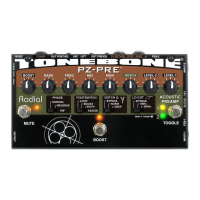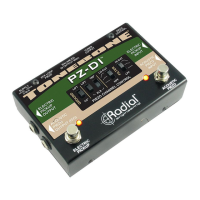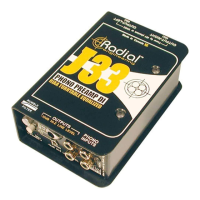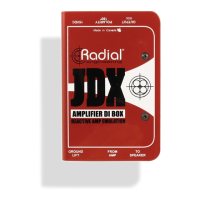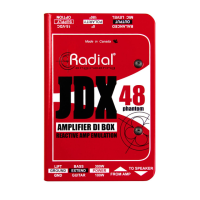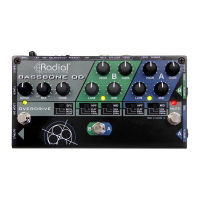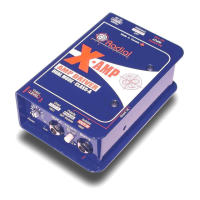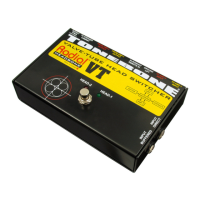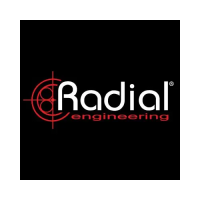PZ-Pro™
Radial Engineering Ltd.
11
THE BOOST/FX LOOP FOOTSWITCH
THE PZ-PRO OUTPUTS
The middle footswitch on the PZ-Pro is an
assignable switch that can activate either the FX
Loop, the Boost, or both at once. Press this switch
once to activate the selected features which will
also turn on the red LED indicator. Press a second
time to turn them back o.
The Boost/FX Loop
Footswitch
The Footswitch
Assign control
The Footswitch Assign control lets you select which
features will be activated by the Boost/FX Loop
Footswitch. Set this to Boost or Loop if you only want
the footswitch to turn on one of these features at a time.
When set to 'both', the footswitch will turn on the FX
Loop and the Boost simultaneously, allowing you to add
in your eects pedals and increase the gain for soloing.
A Loop On switch is also provided on the left side
of the PZ-Pro, which allows the FX Loop to remain
active at all times, so you can control your eects
pedals individually using their own footswitches.
Use a small screwdriver to activate this recessed
'set and forget' switch. Once active, the Boost/
FX Loop Footswitch will only control the Boost
function.
The Loop On switch
The Pre and Post EQ XLR outputs
The PZ-Pro has two XLR outputs which provide balanced, mic-level
signals that be run up to 100 meters (300ft) without noise to feed the
microphone inputs of a mixing console or a recording interface. These
outputs are active whenever the Mute Footswitch is not engaged, and
both can be used simultaneously depending on your setup requirements.
The Pre EQ XLR Out takes a tap of the active input immediately following
the input Level control. This allows you to capture the signal before
(Pre) the EQ, FX and Boost features to send a 'dry' signal to the PA or
recording system. This output is often preferred by the sound engineer
as it gives them a clean unaected tap of your instrument to optimize for
playback through the house sound system.
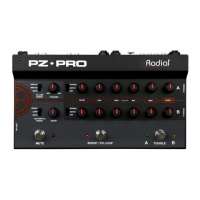
